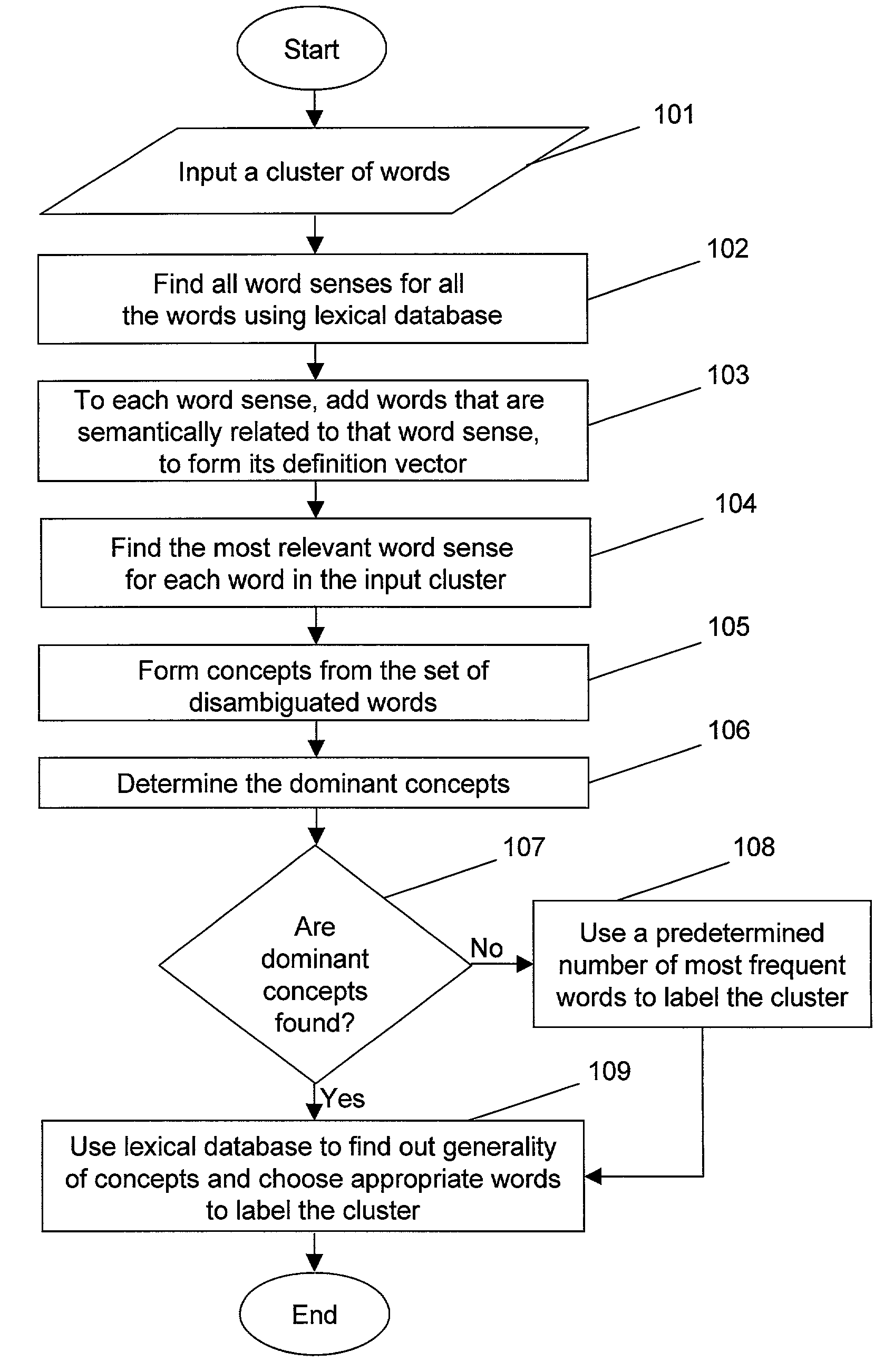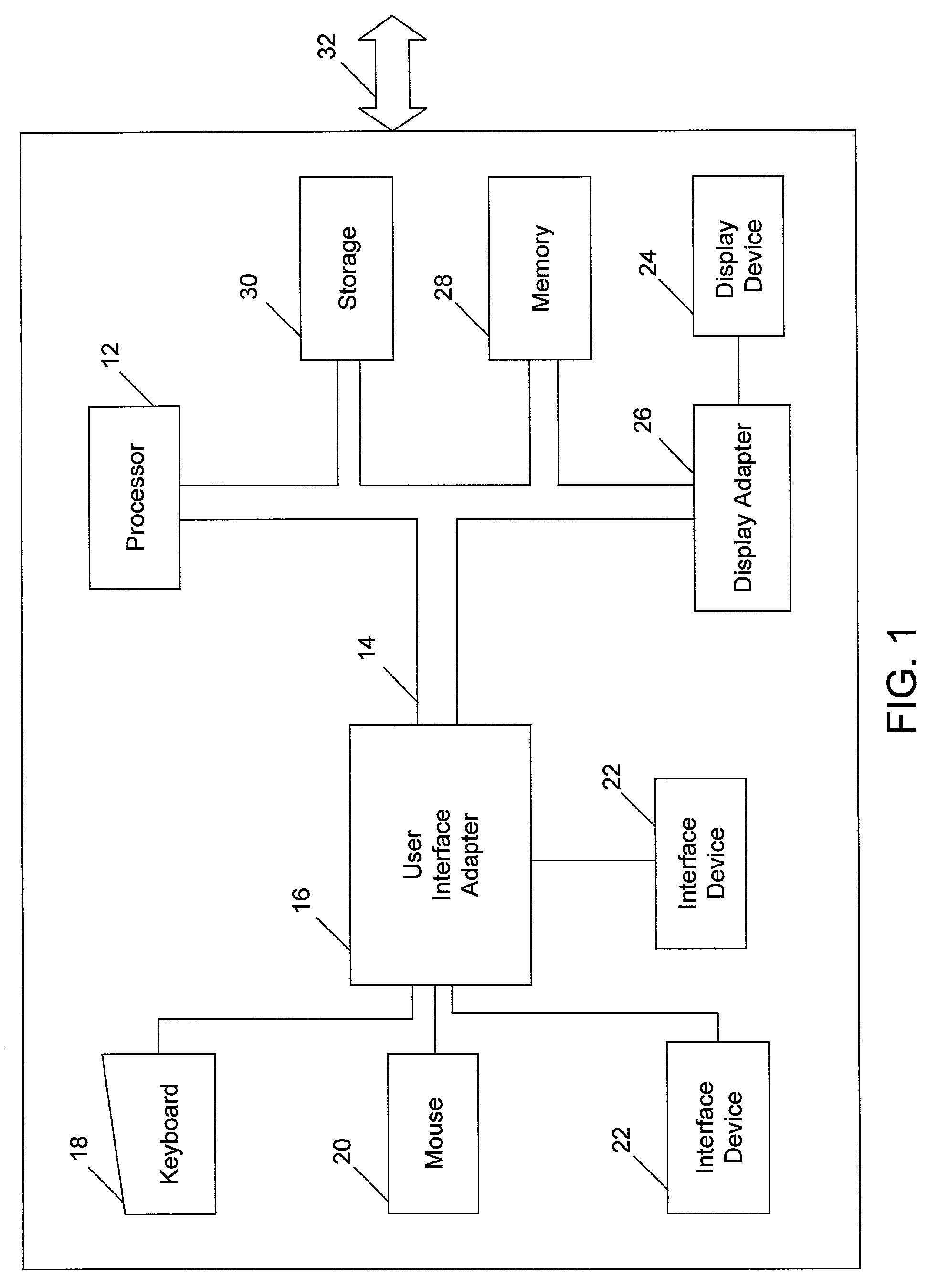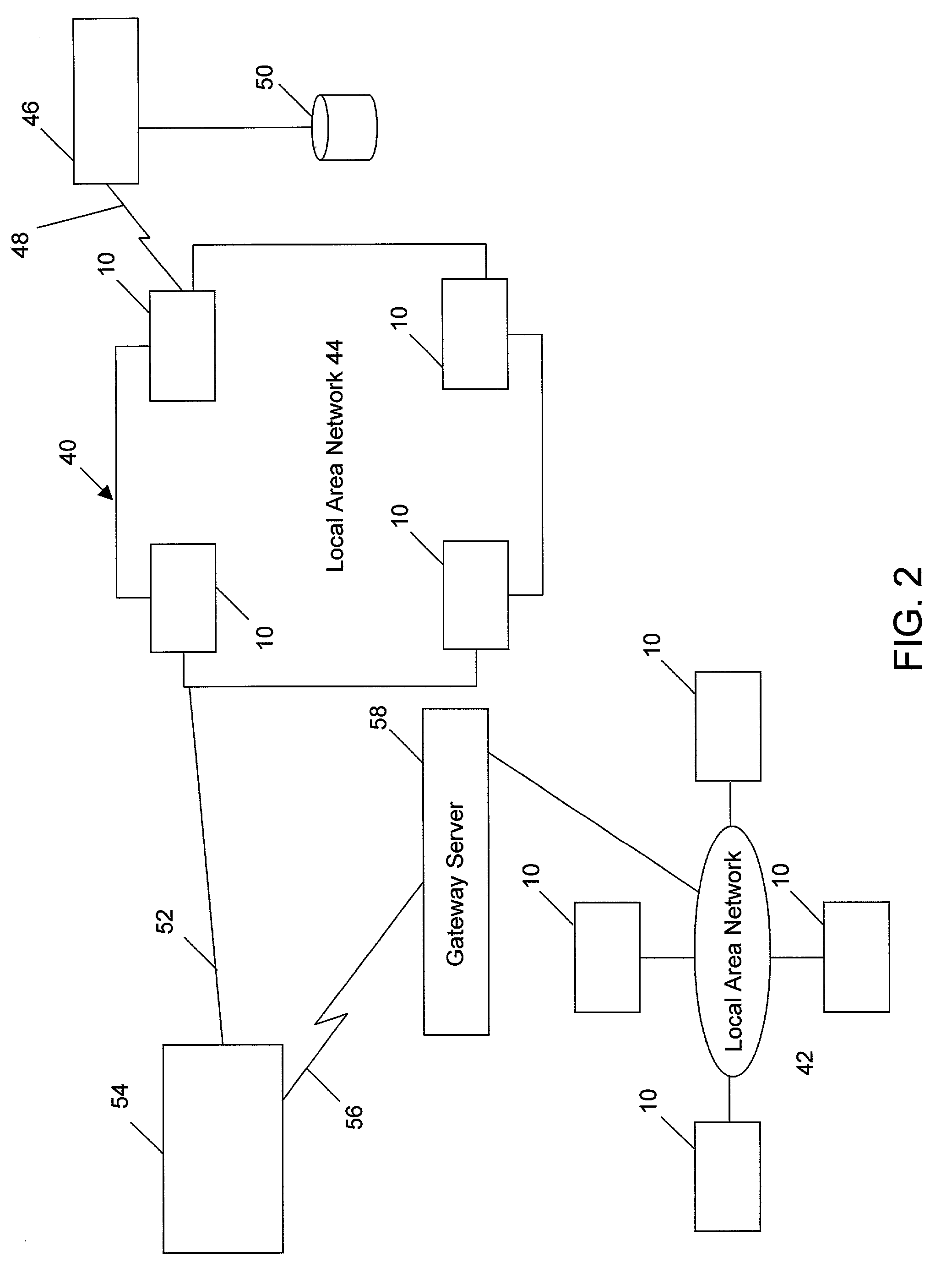Method and system for naming a cluster of words and phrases
a clustering and clustering technology, applied in the field of automatic naming of a set of documents, can solve the problems of difficult and time-consuming data or document retrieval, difficult to efficiently search for a particular news article, and large overall quantity of data
- Summary
- Abstract
- Description
- Claims
- Application Information
AI Technical Summary
Benefits of technology
Problems solved by technology
Method used
Image
Examples
Embodiment Construction
[0035]FIG. 1 illustrates a representative workstation hardware environment in which the present invention may be practised. The environment of FIG. 1 comprises a representative single user computer workstation 10, such as a personal computer, including related peripheral devices. Workstation 10 includes a microprocessor 12 and a bus 14 employed to connect and enable communication between microprocessor 12 and the components of workstation 10 in accordance with known techniques. Workstation 10 typically includes a user interface adapter 16, which connects microprocessor 12 via bus 14 to one or more interface devices, such as a keyboard 18, mouse 20, and / or other interface devices 22, which may be any user interface device, such as a touch sensitive screen, digitized entry pad, etc. Bus 14 also connects a display device 24, such as an LCD screen or a monitor, to microprocessor 12 via a display adapter 26. Bus 14 also connects microprocessor 12 to memory 28 and long-term storage 30 whi...
PUM
 Login to View More
Login to View More Abstract
Description
Claims
Application Information
 Login to View More
Login to View More - R&D
- Intellectual Property
- Life Sciences
- Materials
- Tech Scout
- Unparalleled Data Quality
- Higher Quality Content
- 60% Fewer Hallucinations
Browse by: Latest US Patents, China's latest patents, Technical Efficacy Thesaurus, Application Domain, Technology Topic, Popular Technical Reports.
© 2025 PatSnap. All rights reserved.Legal|Privacy policy|Modern Slavery Act Transparency Statement|Sitemap|About US| Contact US: help@patsnap.com



